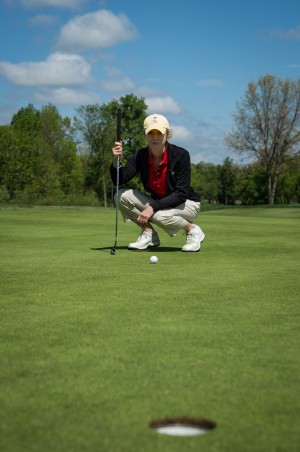Reading Greens Like A Pro

When playing golf with my students, friends, and most any other golfers, I see one common fault among them. Once we have reached the green, they are limiting themselves to the amount of information that is available when it comes to reading the break of their putts. You too may at fault. More often than not, these players only read the putt from directly behind their ball, placing the ball between themselves and the hole.
Players should start reading the break of their putts well before they ever set foot on the putting surface. You can get a great general idea of the overall slope of the green, especially if the putting surface is relatively flat, from back in the fairway. Looking beyond just the green, look at the overall terrain around the green complex. This will give you a great opening look at what you putt is likely to do. Once you’ve reached the putting surface start paying attention, not only with your eyes, but also with your feet. You feet will provide you with a great deal of information about the putting surface. Walking around the green, tending the flag for other players in your group, will allow your feet to send valuable information to your brain.
Now that you’ve got a great general idea of the putt, it’s time to really fine tune your focus. If your fortunate enough to hit your ball closer to the hole than your playing partners, you can observe how their putts behave as they slow down around the cup. When you’re reading you putt, you will always get the best read from the lowest point. With that said, if you’re putting uphill your best read will be from behind the ball with the ball between you and the target. You’re standing at the lowest point. Vice versa, if your putt is downhill, your most accurate read will come from the opposite side of the hole, with the cup between you and your ball. Again, you’re standing at the lowest point.
Now that you have the line, aim your putter and focus on nothing more that your target and the speed you want to hit the putt. By gathering all of the information that is available to you, you’ll be able to more accurately read your putts, leaving misses closer to the hole and eliminating the dreaded 3-putt!


